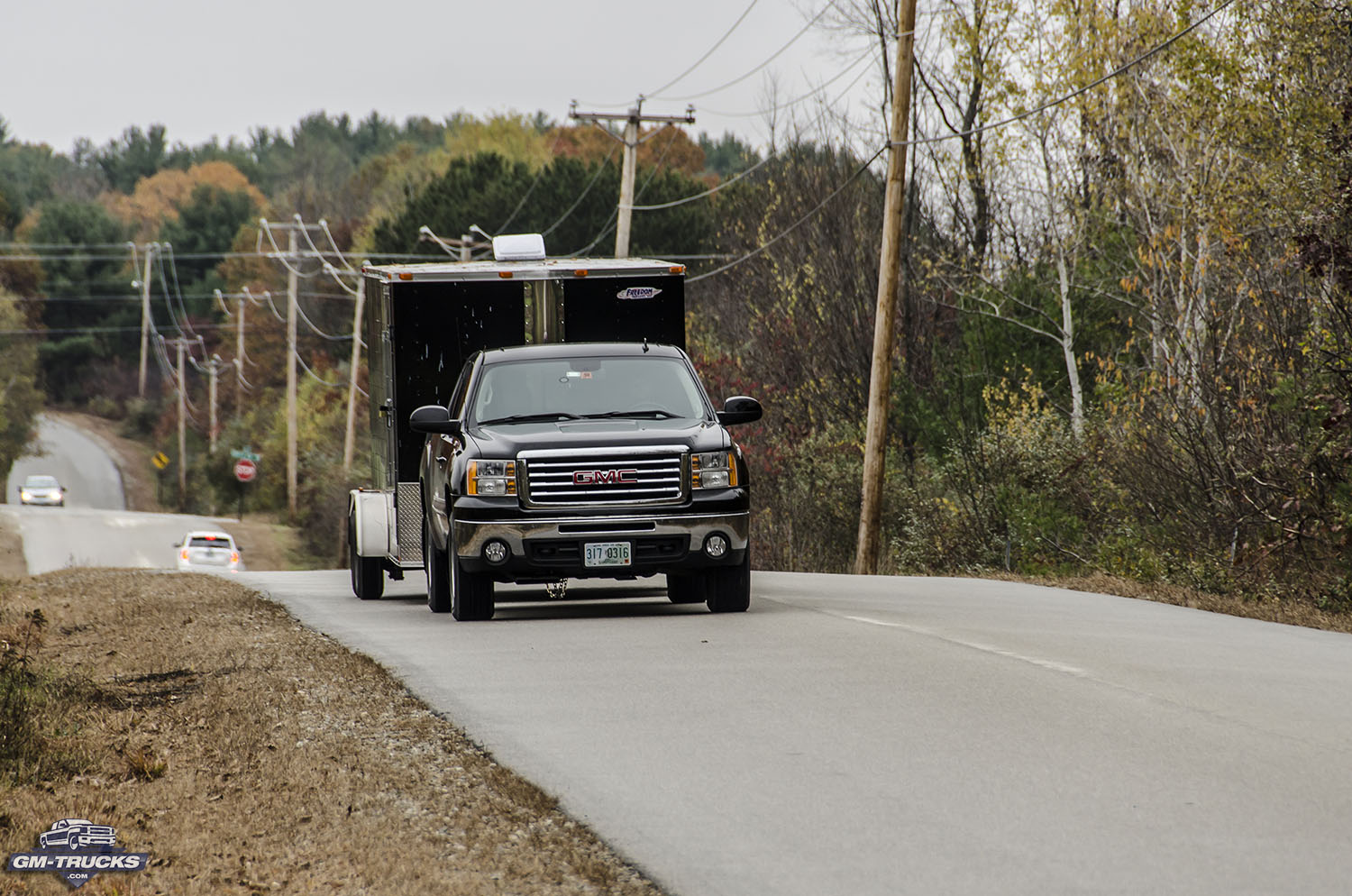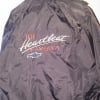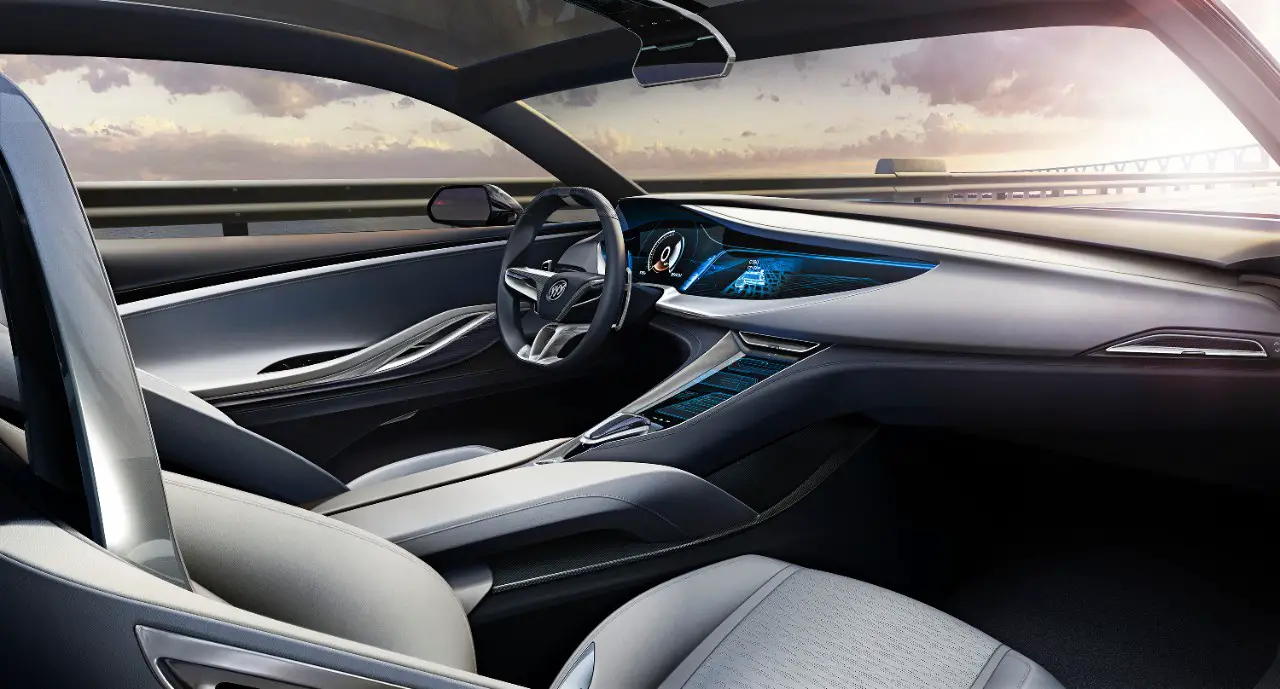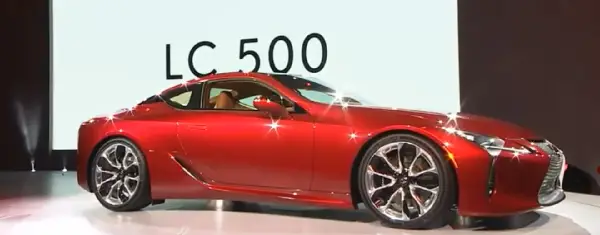
Manufacturer: Air Lift Company
What it is: The RideControl kit from Air Lift is an adjustable air bag system used to keep your pickup’s suspension level while towing and more comfortable when unloaded. Using a compressor and wireless remote, air pressure is adjusted from 5psi up to 100psi, allowing the driver to level their vehicle for various loads or situations. With a level suspension, towing a trailer is easier on your truck, more stable on the road, and safer for you and your cargo.
Product Features/Specifications:
- Up to 2,000 lbs. of load-leveling capacity
- Eliminates squat, trailer sway, rough ride and bottoming out
- No frame drilling required
- Limited Lifetime Warranty
Cost: $530
$235 - RideControl Adjustable Air Spring + $295 - WirelessOne Compressor System
Installed and tested on: 2011 GMC Sierra All Terrain SLT Extended Cab
The whole towing problem
Many of us tow with our trucks on a frequent basis. In fact, we bet many of you purchased your truck with towing in mind. However, if you tow more than a couple thousand pounds with a light duty truck on a regular basis you’ll probably get an idea why the pros use 2500HD and 3500HD pickups. However, most of us don’t have a need for a heavy duty truck and are only towing on occasion.
While it’s true that our trucks are built for the purpose of hauling stuff around, most of the time they dutifully serve as personal transporters and elaborate grocery getters. GM knows this and as a result, our 1500 Silverado and Sierra pickups are tuned to be comfortable first and to perform while towing and hauling second.
That means our trucks suffer from less than desirable traits in both situations. We all know how easily a truck’s rear end bounces around while unloaded. On the flip side, rear end squat is a serious issue when a light duty pickup is pushed to its rated limits.
When a truck is pushed to it’s limits and the rear suspension bottoms out you inhibit the shocks ability to dampen bumps. Added weight in the rear also has the effect of lifting up the front end. This wreaks havoc on your steering, tire wear, maneuverability, and most importantly... safety.
This is where AirLift comes in. The RideControl system is an aftermarket airbag system used to support your truck’s suspension. Inserted between the rear axle and frame, parallel to your existing shocks, the system adjusts its internal pressure to add support only when your vehicle needs it.
We were interested in Airlift’s RideControl system, so we installed one on Project Sierra. Here’s how it went and what we thought.
Installing the RideControl and WirelessOne:
Installing the RideControl is a task that is entirely possible to do in your driveway with a set of ramps or jack stands. With that said, this is not a beginner project and if you’re not entirely comfortable digging into your truck and running wires, we’d suggest having a professional complete the task.
While we won’t go over the entire process, installing the RideControl breaks down into a few easy steps.
First we removed the rear tires, the rear inner wheel well liners, and the rear spare tire.

Then we mounted the brackets to the frame and leaf spring along with a deflated airbag.

The next step is to run your airlines. Both bags will be connected to the same compressor. We ran the lines from each airbag to a ‘T’, which in turn had another ‘T’. One end of the hose will be run to the air compressor while the other is tucked behind the rear bumper and equipped with a schrader valve for emergency manual inflation.
We then carefully cut the inner wheel well liner to fit the mounting bracket and reinstalled it.

We then installed the air compressor and controller manifold under our spare tire. We chose this location because it was protected and far enough away we cannot hear the compressor running from inside the cabin.

Lastly, we ran the wiring harness to the engine compartment and connected it to a keyed power source.
After we confirmed the system inflated the airbags and none of our lines leaked, we reattached the wheels and buttoned the project up.

A smooth ride, all the time
After installation, we couldn’t wait to test our new air suspension. As we accelerated out of the shop we could immediately feel a distinct difference in the way the Sierra handled.
With our Sierra unloaded we got to work testing every available air pressure setting we could. The system has a minimum pressure of 5psi and should never be driven completely deflated. Conversely, the compressor has a maximum setting of 100psi, for when you’re taking your vehicle to its limit.
We found that the RideControl system significantly changed the unloaded driving behaviour of our Sierra for the better when set to between 5psi and 10psi. The air bags helped our truck’s suspension soak up bumps and settled down axle bounce at the same time. The result was a vehicle that drove with less flex, more composure, and was more comfortable than stock.
We then hooked up a dual axle 12-foot enclosed trailer stuffed with an ATV and its related equipment. This combination weighed approximately 2,500lbs. After increasing the pressure in the airbags until the truck and trailer were level we set out to see how this combination handled.
With a trailer hitched up in our rear view mirror, the RideControl system shined. We immediately noticed how level our Sierra sat, even with the extra weight in the back. This level position preserved the correct steering angle of the front end, brake distribution, and helped reduce drive line shock during transitions from acceleration to braking.
In general, our Sierra acted as if it was given a huge confidence boost.The AirLift system stiffened our Sierra’s suspension and added new found stability and capability to our last generation truck.
Worth noting, however, is when we went to take video of the airbags operating, the unit stopped working. We couldn’t figure out why, and since the remote still lit up we assumed it was functioning correctly. After checking everything else, we decided to replace the remote's batteries, and voila, everything came back to life. Because of this, we highly recommend keeping a spare set of batteries to avoid any mid tow remote battery failures.
Conclusion
Not just for towing, Airlift’s RideControl Airbag System improves our Sierra’s ride and handling every time we get behind the wheel. Before installation we were dubious that this product would provide any measurable benefit beyond substantial towing and hauling. We were wrong.
While we love the added stability while towing a fully loaded trailer, we really appreciate the added stiffness the RideControl system adds to our trucks rear suspension when running errands or driving to work. Our rear axle dances less on washboard dirt roads and sucks up potholes better than before. And with the new K2 trucks sharing much of the same chassis design as our 2011, they too would benefit from this serious upgrade. If you tow more than a few times a year and don’t want to compromise your truck’s everyday driving ability, then the ride control system from AirLift is just what the doctor ordered.








Recommended Comments
There are no comments to display.